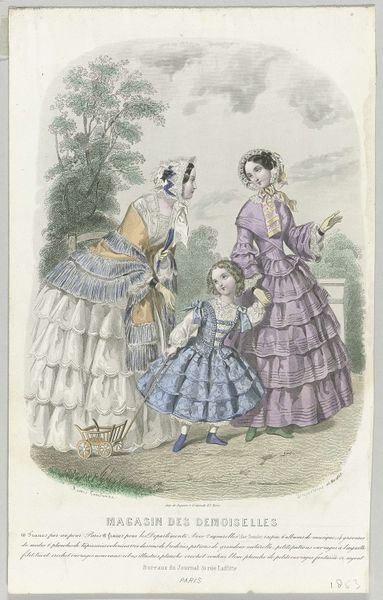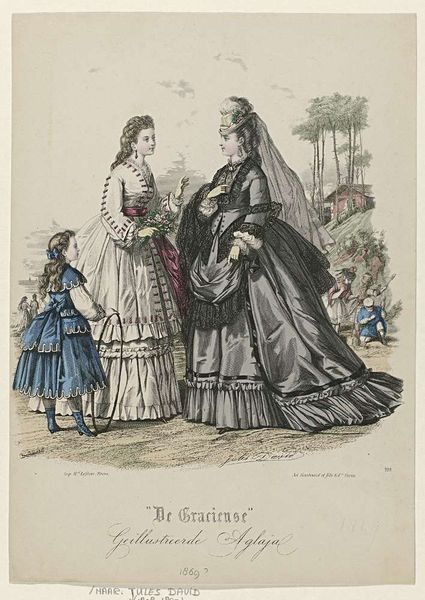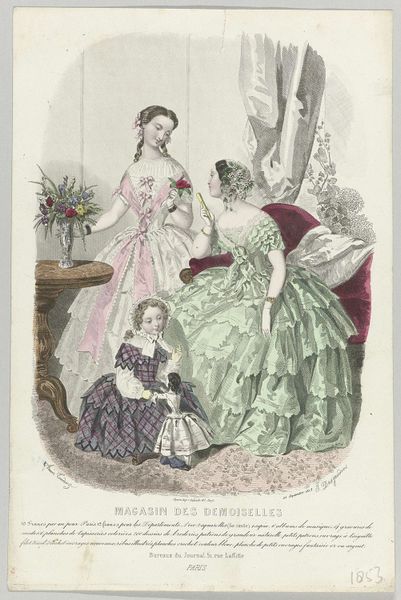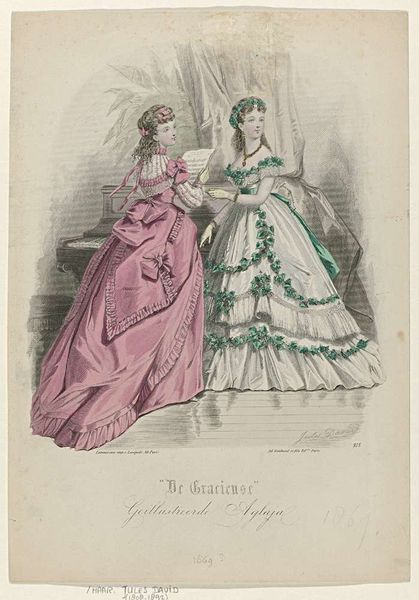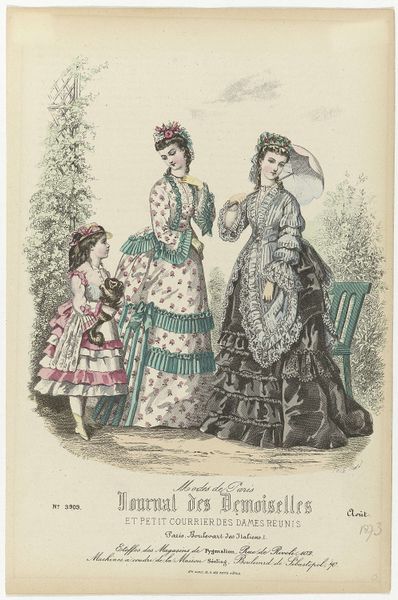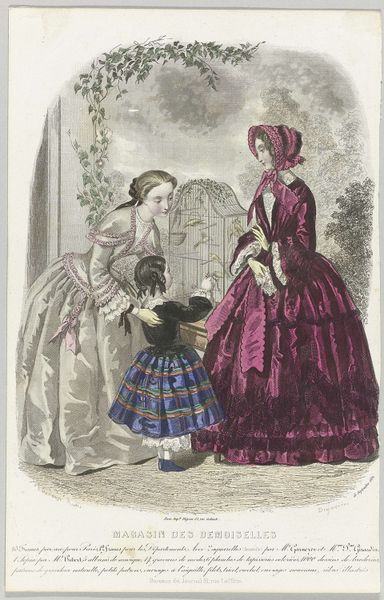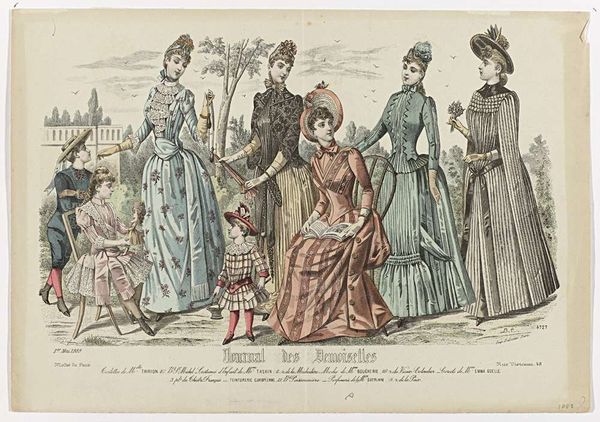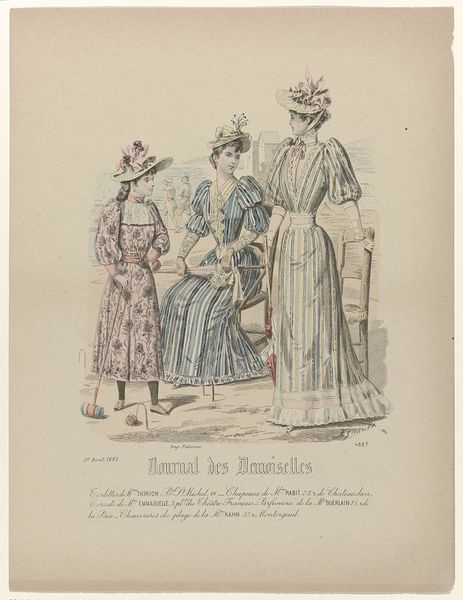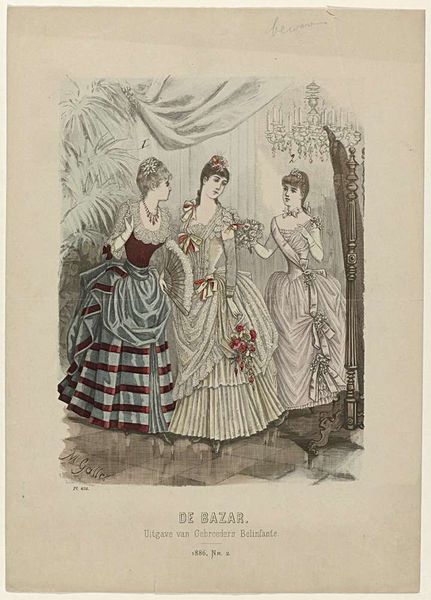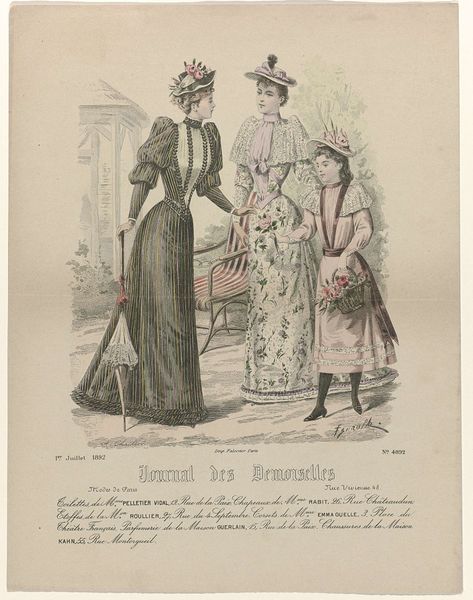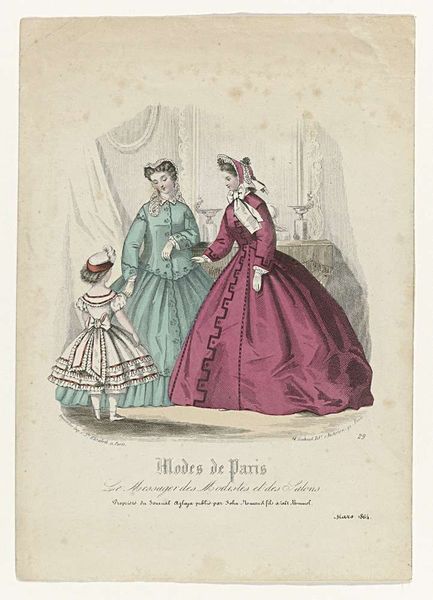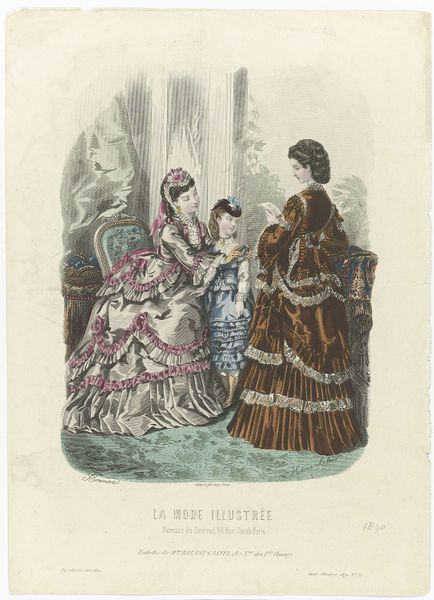
lithograph, print
#
portrait
#
lithograph
# print
#
pen sketch
#
watercolour illustration
#
genre-painting
#
dress
Dimensions: height 294 mm, width 203 mm
Copyright: Rijks Museum: Open Domain
J. Bonnard's "De Gracieuse, Geïllustreerde Aglaja, 1870," captures women's fashion through the symbolic language of clothing. The elaborate dresses, adorned with layers of fabric and intricate details, reflect a culture fixated on appearance as an indicator of social standing. These garments are not merely textiles, but emblems of status, echoing the ways classical drapery was used to distinguish figures of importance. Consider how the folds and arrangements of robes in ancient sculpture served to elevate the subject, creating a visual hierarchy, a visual language that has since evolved in similar, if more complex, forms. We can also trace the lineage of dress and ornamentation back to ancient rituals, where specific patterns and materials were believed to hold power. Even here, the subtle details and colors could hold subconscious cues, engaging viewers on an emotional level. What does the color, composition and shapes of these dresses tell us, psychologically, about the women who wore them? Thus, the dresses in this image, though seemingly simple, continue a long, cyclical progression, resurfacing and taking on new meanings in the ever-evolving tapestry of cultural memory.
Comments
No comments
Be the first to comment and join the conversation on the ultimate creative platform.
